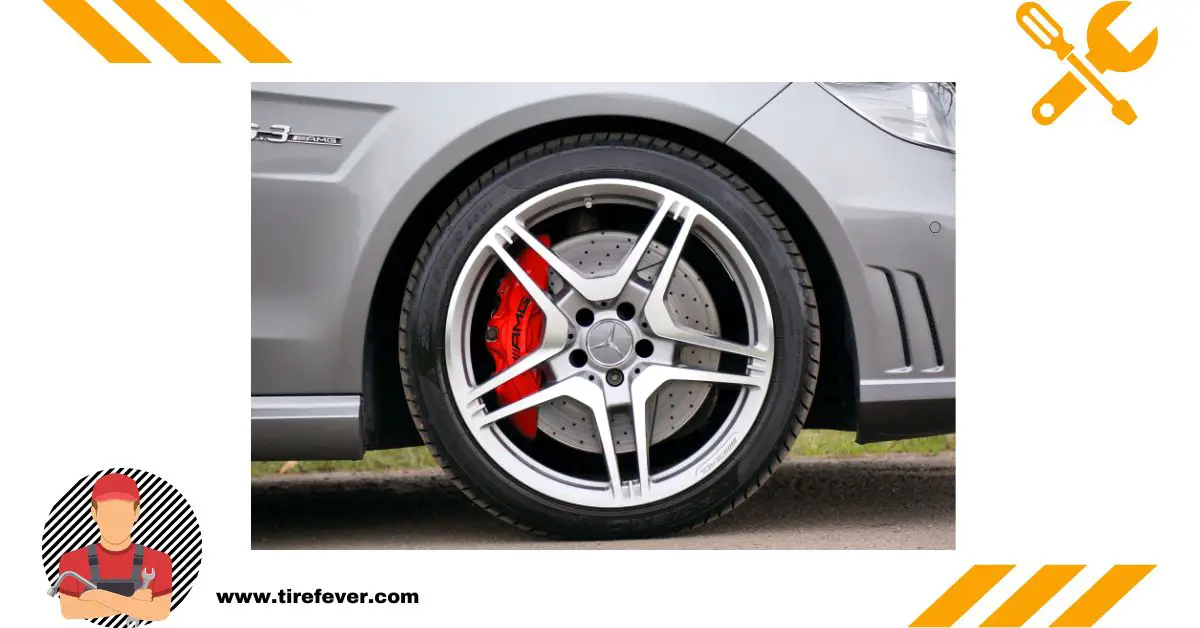There are compatibility issues when it comes to tires and their accompanying rims. This has made it mandatory for all drivers to know, with absolute certainty, what size tires will fit what size rims.
In fact, this is where you should learn to study the number markings on your tire sidewalls. These numbers will tell you everything you need to know about tire/ rim compatibility.
So, what size tire can I put on a 20×10 wheel? For any tire and rim to be perfectly fitted, there must not be any rubbing between the tire and anything else in the tire well of the vehicle. The following tires will all fit the 20 — 10 wheels: P 295/ 25 R20, P 245/ 39/ R20, and P 215/ 35 R20.
Apart from these ones, other equally compatible tires with 20′ — 10 wheels are; tires with widths of between 245 or 255 mm, 255 or 265 mm, and 265 or 275 mm.
Another is 275 or 285 mm tires. There are still other tires that will fit the 20 — 10 inch rims, which are : 295/ 50- 20, 295/ 55-20, 295/ 60- 20, 295/ 65-20.
How do you know if a tire will fit a rim?
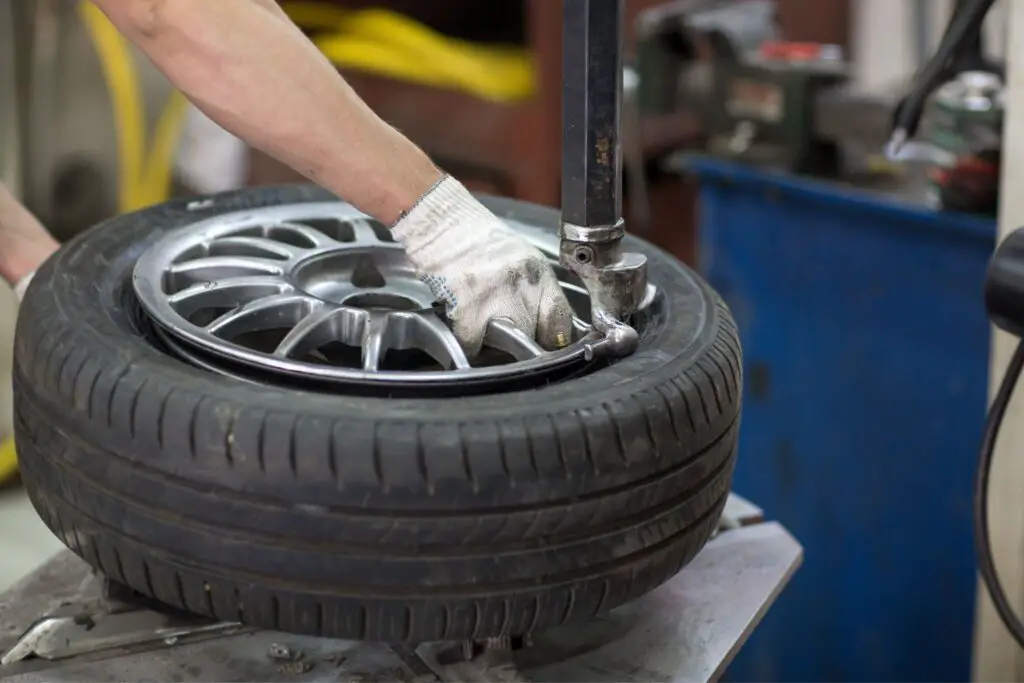

It is easy to know whether a rim and a tire are a fit. Basically, the major criteria for this compatibility are the diameter and the width of both the rim and the tire.
In the case of the diameter, you will have to be certain that your tires and wheels are a perfect match.
For example, the 215/ 65 R17 tire will fit only a 17-inch wheel diameter. However, there’s a little flexibility when it comes to the widths of the wheels.
In essence, if the widths and diameter of both your tire and rim are a perfect fit, you can swap them without any issues. Although the diameter is more strict than the width, which is said to be a little more flexible.
What size tires do I need for 20 x 10 rims?
The tire size you’ll need for your 20×10 wheels will depend on your driving preferences.
To determine the right tire size rim, you may need to refer to the recommended tire sizes from your tire manufacturer. Your driver’s side door jamp may also provide more information about the recommended tire size for your vehicle.
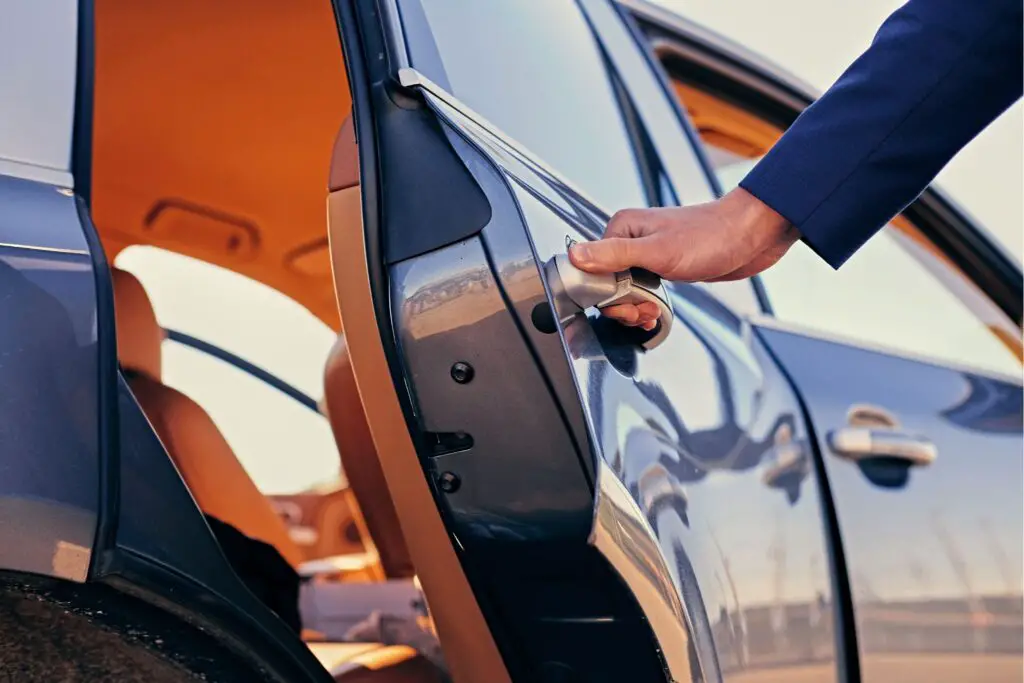

The following are tire sizes that fit 20×10 rims: 245 or 255 mm tires, 255 or 265 mm tires, 265 or 275 mm tires, and 275 or 285 mm tires too. Others are, the 295/ 50- 20, 295/ 55- 20, 295/ 60- 20, and 295/ 65- 20 tires.
These tire sizes will provide you with good performance on the road. They’ll have good traction and handling as well as ensure you have a smooth and comfortable ride.
Can I put wider tires on 20×20 wheels?
Of course, you can put wider tires on 20×20 wheels comfortably. Therefore, it is expected that a 20×20 tire will be just fine in the front than the rear.
All the same, in order to keep both the suspension and the speedometer functioning properly, the width and stock diameters of the wheels and tires need to be maintained.
As a general rule of thumb, it is much safer to fit a tire up to about 20 mm wider than the stock on the original rim.
Can I change tire size without changing rims?
Indeed, it is possible to change the size of a tire without changing the rim. If you should want to use larger rims, you can get tires that compensate adequately for the larger rim by simply reducing the height of the outer tire.
In fact, the larger your tire is, the more grip it is bound to have with the road. Conclusively, therefore, you can use larger tires on your rims as long as the middle of the tires are the correct sizes that you must fit on the rims.
Trending Searches
- Can I Put A 2.1 Tire On A 1.95Rim? Find Out
- Can I Jack My Car Up On A Slope? Find Out
- Why Do Mercedes Have Different Tires? Find Out
Can you put a different tire size on the same rim?
Yes, you can put a different tire size on the same rim, if you will reduce the height of the outer tire. In other words, the larger your tire is, the more grip it is bound to have on the road.
Furthermore, larger tires will only suit smaller rims, if the middle of the tires is of the correct size, otherwise, it won’t work.
Does rim width matter for tires?
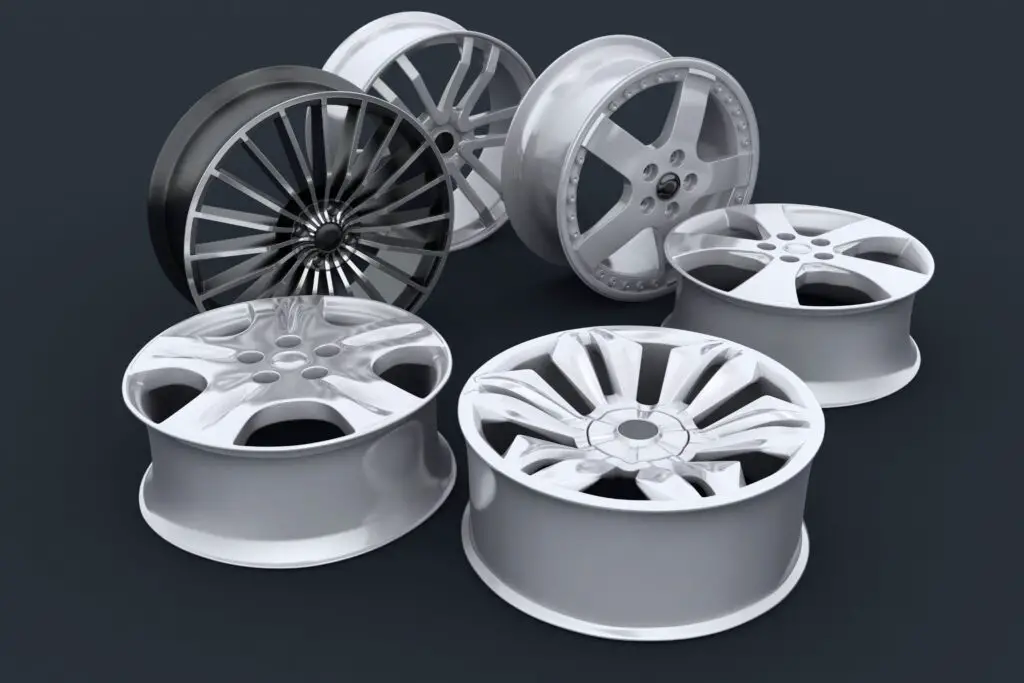

Yes, the width of the rim actually matters as far as the tires are concerned. It is a well-known fact that the width of the rim greatly influences the width of the tire too.
For this reason, any tire mounted on a narrow rim will simply be narrower than if the same size of the tire was mounted on a wide rim.
As a general rule, for every 1/2 inch change in rim width, the tire’s section width should correspondingly change also by about 2/10 inches too.
Along with the same recommendation, a 5 inches rim will perfectly fit a tire whose width is about 165 or 175 mm, 5.5inch rims for 175Â or 185 mm tires, and 6.0-inch(Read Also: Does Spare Tires have TPMS?)
Rims for 185 or 195-mm tires, and finally, 6.5-inch rims for 195 or 205-mm tires, and so on. Generally, up to about 20 mm, wider tires than stock can be put on the original rim.
The actual tire width may vary depending on the width of the rim. A good tire can expand by up to about 5 mm for every 1/2 inch or 12.5 mm increase in the rim width.
How big a tire can I put on a 20 x 10 rim?
The size of the tire to be used is mostly controlled by a number of factors such as your vehicle specifications and your car manufacturer’s recommended tire size.
Some of the commonest big-size tires you can put on a 20×10 rim are: P 235/ 35 R20, P 285/ 30 R 20, P245/ 35 R20, and also P255/ 35 R 20.
As a general rule, please note that installing larger tires than what’s recommended by your car manufacturer could affect your vehicle’s handling and performance.
Will a 255 tire fit a 10-inch rim?
It is just fine to put a 255 tire on a 10-inch rim, although it is most likely going to give it a little more stretch.
Basically, for every square tire, one inch more in size, you can use a 265 tire as well. A rim of width 8.5 inches will therefore perfectly fit a 255 mm tire.
Will 11-inch wheels fit 315 tires?
Yes, an 11-inch rim will fit a 315 tire, as well as its wheel well very perfectly. Usually, the radial competitors can actually run the 315 tires on a 14-inch wide rim.
The 315/ 60 R 15 tires have an average diameter of about 15 inches. Their circumference is 93.8 inches and they also command about 675 revolutions per mile ( rev./ mile).
They are generally approved to be mounted on 8.5 to 11-inch wide wheels.
Can you put 17-inch tires on 20-inch rims?
Yes, you can put a 17-inch tire on a 20-inch rim albeit with certain conditions. To be more specific, if it is a steel wheel of 17 inches and an alloy rim of 20 inches, then you can.
However, if it is an alloy wheel of 17 inches, then no, you cannot. Stock 17-inch tires weigh approximately 39 lbs to the ’20s 51.2 lbs.
Are 30-inch tires good for off-roading?
When it comes to tearing it up on the road, mud tires can’t be bettered. In reality, a set of 30-inch mud tires are arguably the best choice for a full-tilt performance in the mud without any aggressive upsizing or even a decrease in on-road handling, or fuel mileage performance.
What sizes do 20-inch tires come in?
The 20-inch tires come in different sizes, which makes them very universal in terms of what vehicles you can mount them on.
Some of their most popular sizes are: 275/ 65 R20, 265/ 60 R 20, 275/ 60 R 20, 275/ 55 R 20, 245/ 45 R 20, 255/ 35 R 20, 275/ 35 R20, and 245/ 40 R 20.
There are others still that can fit nicely as well, but these are some of the commonest and more readily available at most auto shops and reputable suppliers like Amazon.
What is the advantage of 20-inch wheels?
First of all, a 20-inch wheel is visually very appealing to the sight. Secondly, it has less sidewall and also shows more wheels, which many people find to be more aesthetically pleasing, after giving the vehicle a more aggressive appraisal.
Do bigger tires get more mileage?
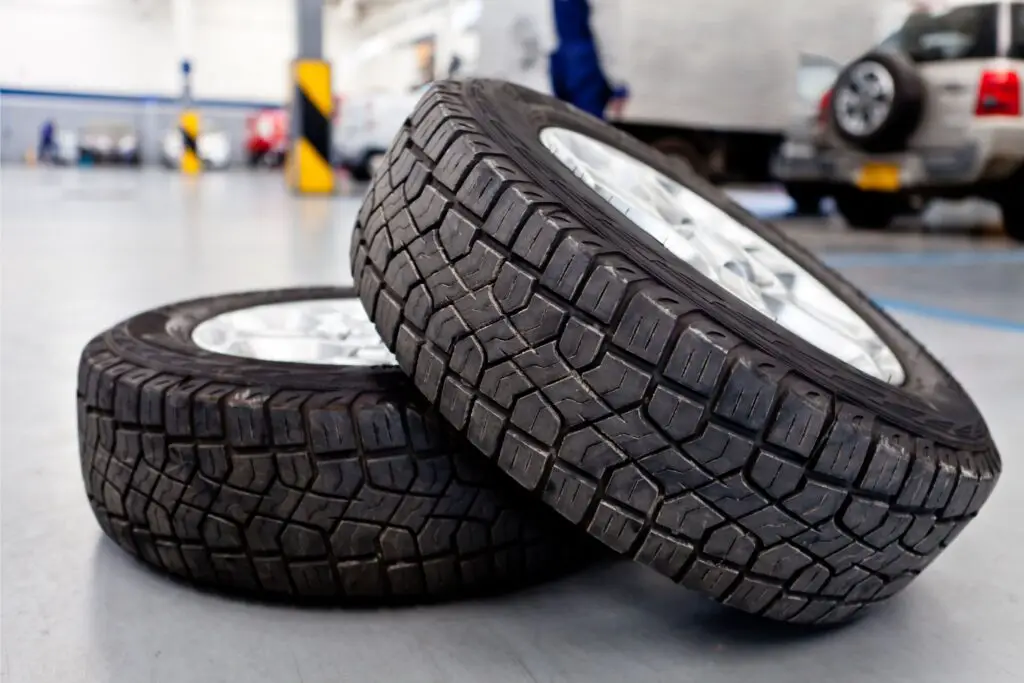

Bigger tires are heavier than the smaller varieties, which exerts more stress on the engine. The implication of this is that they decrease your mileage and fuel economy.
Smaller tires, on the other hand, are lighter and that translates into an increase in mileage and fuel economy too. In addition, bigger tires have more rolling resistance than smaller ones.
That also means that they require more resistance and effort in order to get them rolling along the road. Conclusively, therefore, bigger tires do not get more mileage than smaller tires.
What are some of the commonest causes of flat tires in vehicles?
As long as you keep driving or riding on the road, you can’t in all honesty, avoid getting a flat tire every so often. Therefore, it becomes imperative for you to know some of its causes, in order to avoid being delayed often while on transit.
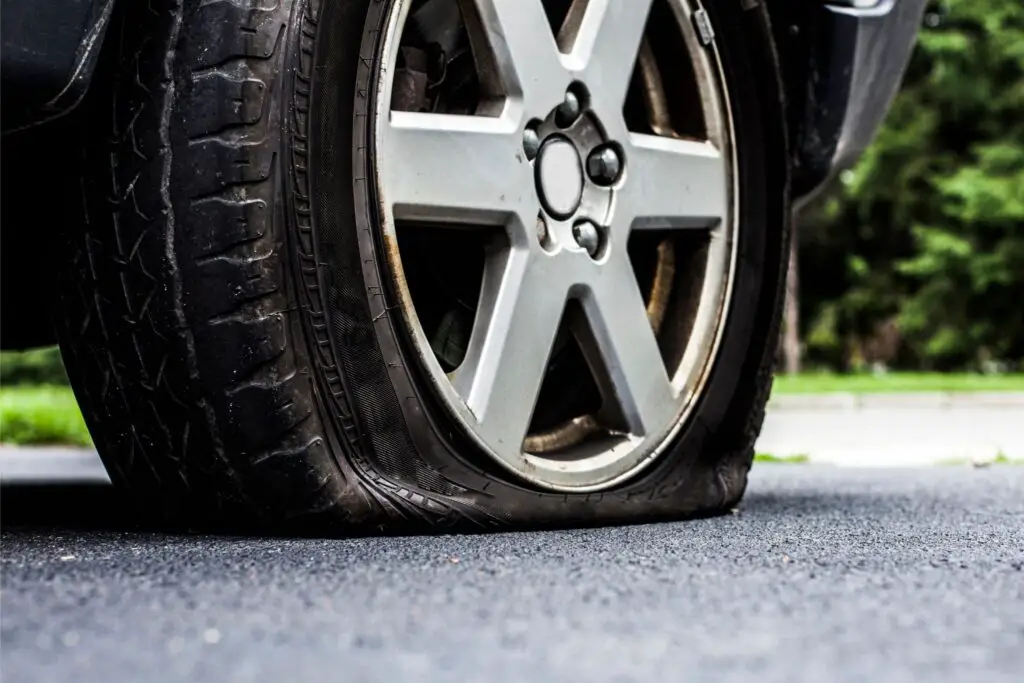

Tire blowouts can occur either late at night or even in very inclement weather conditions. Although you cannot prevent getting a flat tire every now and then, a thorough knowledge of how to properly maintain your tires will help in reducing the prevalence of being affected. Some common causes of flat tires are:
(1). Puncture due to sharp or pointed objects. Tires can easily get punctured by such objects as nails and pieces of broken glass. As a result, you should always drive around or avoid any debris on the road.
(2). Damage to your tire valve. It is a tiny protrusion from your tire, which you unscrew when you want to inflate your tire. Flat tires are commonly caused by damaged or corroded valves. To avoid this malfunction of the valve, always check it to make sure that it is functioning well.
(3). Rubbed or ripped vehicle tires. Any worn or ripped tire is definitely a danger to be avoided. Consequently, always check up on your tires for any sign of damage, such as scuffed and excessively worn-out areas.
(4). Tire bead air leaks. Air commonly leaks out via tire beads, which are the edges of the tires that rest on the rim. Such leaks can cause a flat tire over time. In order to check for bead leaks, spray soapy water on the wheels and valve system. A steady stream of tiny bubbles will prove the presence of a leak in the tire.
(5). Vandalism. This involves vandals letting the air inside your tire out deliberately. In such cases, simply reinflate your tire and be careful where you park it afterward, which should be at only crowded places.
(6). Collision as in accidents. When vehicles collide forcefully such as during accidents, the tire can get separated from the rim. This situation can cause air to leak out. In this case, you really need the service of a good mechanic to sort you out.
(7). Over-inflated tires. When you over pump tires, it can generate a bad pressure situation, which often results in a tire blowout. Avoid this problem by just knowing the correct pressure your tires can accommodate.
(8). Leaks from alloy wheels. Cars with alloy wheels should be checked regularly for flats or air loss. Take your car to a mechanic regularly for a routine check of the tires.
What Size Tire Can I Put on a 20×10 Wheel? – Conclusion
It is good to know how to properly choose tires and rims for your vehicle. Therefore, you should be conversant with the meanings of your tire markings on its sidewall. These numbers give the details you should not forget.
This way, you can always tell when a tire and rim are compatible or not. Furthermore, you will also know those things about your tires which are compulsory and those which are not.
These include those rims or tires you can install on a vehicle despite any differences in width or diameter. Where compatibility is not assured, refrain from any forceful installation thereof. Lest you put your life and those of others at needless risks.
This post contains affiliate links. Read the full disclosure here.


I am passionate about all things automotive and have a deep understanding of the topic. As a mechanic, I use my free time to share knowledge of everyday challenges that any car owner can experience – helping you make informed decisions about tires.

